If you like to watch butterflies, including butterfly plants in your garden that host the larvae (caterpillars) and also those plants that provide nectar for butterflies is essential. Including these types of butterfly food plants will attract butterflies to your garden and even lay eggs. You’ll be able to spot cocoons and watch the entire life cycle.
Be aware that butterfly host plants will likely be heavily chewed on by caterpillars – but that’s OK. Including wildlife in our gardens means that we get the fun of watching these critters while forgiving a bit of destruction.
Important Butterfly Food Plants & Caterpillar Host Plants
This list includes many flowering herbaceous plants (and one vine) suitable for planting in the southeastern U.S. for the butterflies that we have here. This list focuses heavily on native plants, but there are a few of non-natives included. Happy butterfly watching!
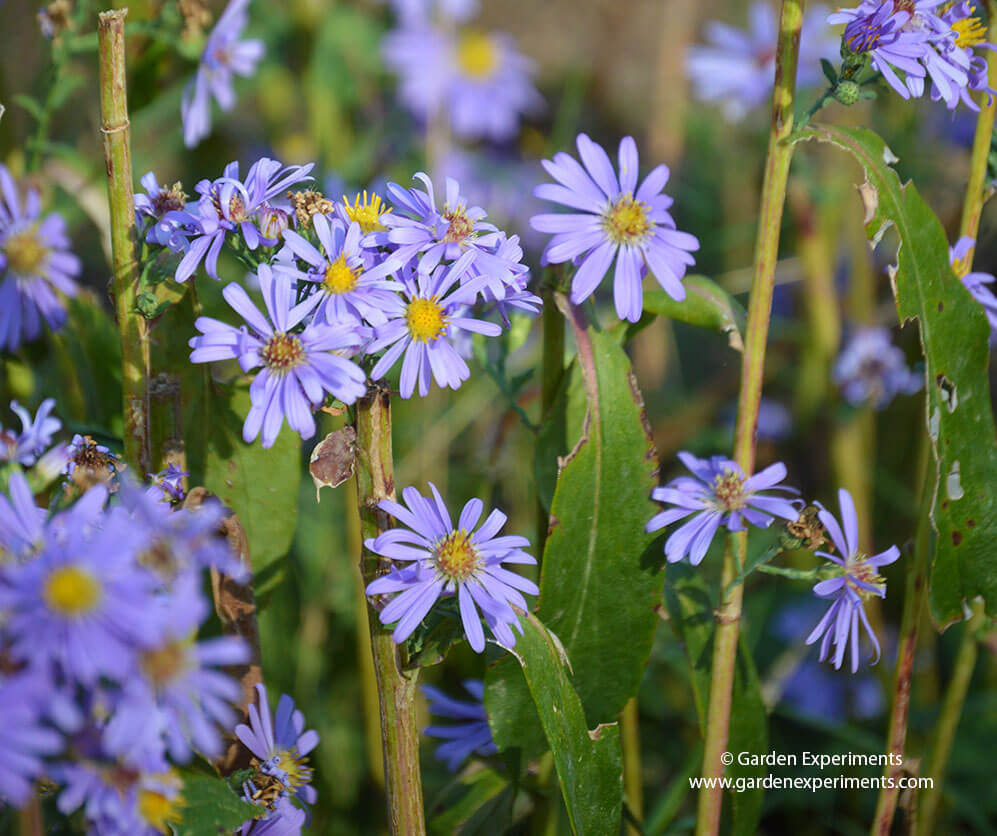
Aster
Aster sp.
Perennial | Native | Zones 4-8
Bloom time: Late summer and fall
Butterfly FOOD PLANT
Asters can be an important plant to feed butterflies, particularly in fall when many other flowers are over. Plant height ranges from 6-8 inches. Grow in full sun in well-drained soil.
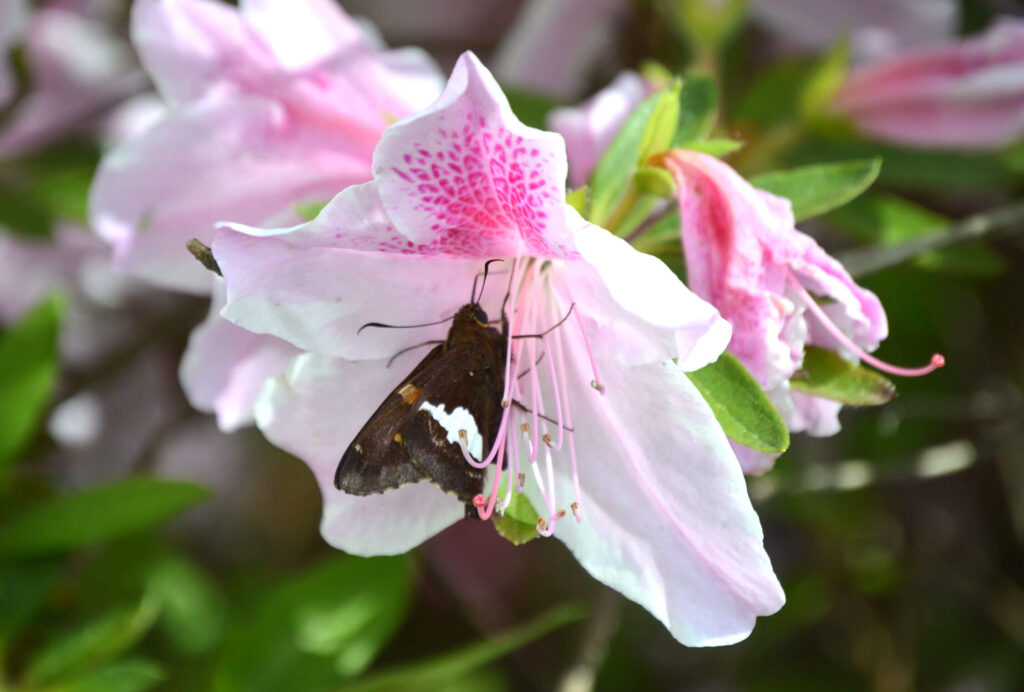
Azaleas
Rhododendron spp.
Perennial | Natives & Non-natives | Zones 5-8
Bloom time: varies
Butterfly FOOD PLANT
Both non-native and native azaleas attract and feed butterflies and bees, especially in early spring. Native azaleas are deciduous. This shrub can be anywhere from 2 feet to 6 feet or much higher, depending on variety. Plant in part shade or full sun (check variety). They prefer moist, well-drained soil with a pH between 4.5 and 6.0
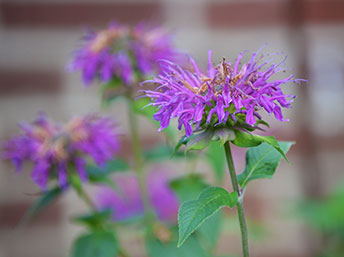
Bee Balm
Monarda spp.
Perennial | Native | Zones 4-9
Bloom time: Summer
Butterfly FOOD PLANT
This native plant flowers in purple, lavender, red, pink, or white. Bee balm grows in full sun to part shade in well-drained but evenly moist soil. Blooms in summer. It provides nectar food for butterflies, bees, and hummingbirds.
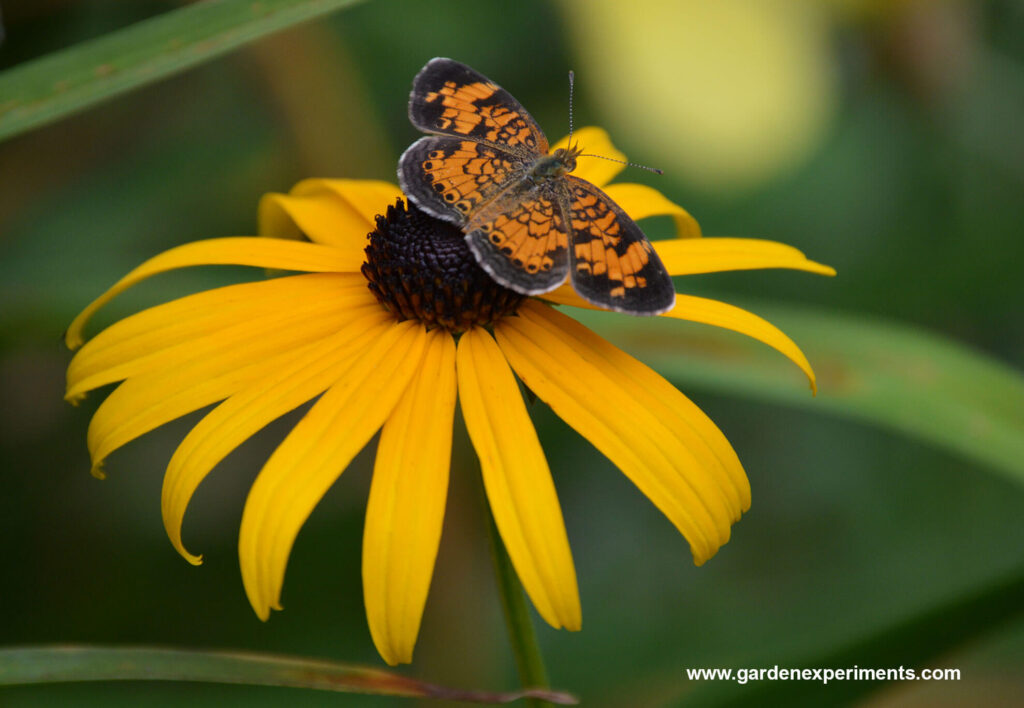
Black-eyed Susan
Rudbeckia spp.
Perennial/Annual/Biennial | Native | Zones 3-8
Bloom time: Spring to fall
Butterfly FOOD PLANT
Black-eyed Susans are deer-resistant, drought-tolerant, and provide food for butterflies and seeds for birds. Plant in full sun in most any soil. Blooms in spring to summer. Plants get about 3 to 4′ tall.
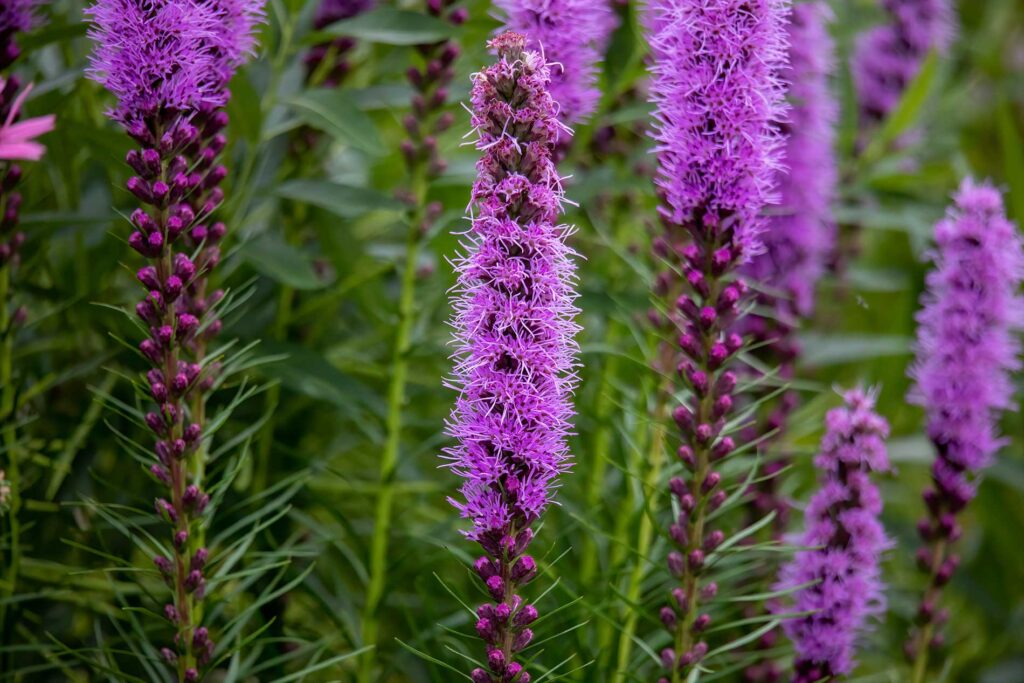
Blazing Star
Liatris spp.
Perennial | Native | Zones 3-9
Bloom time: Summer to fall
Butterfly FOOD PLANT
This tall, erect flower attracts butterflies, bees, and birds. It can be up to 4 feet tall with blue, pink, or white flowers. This plant is deer resistant and drought tolerant. Plant in full or part sun in well-drained soil.
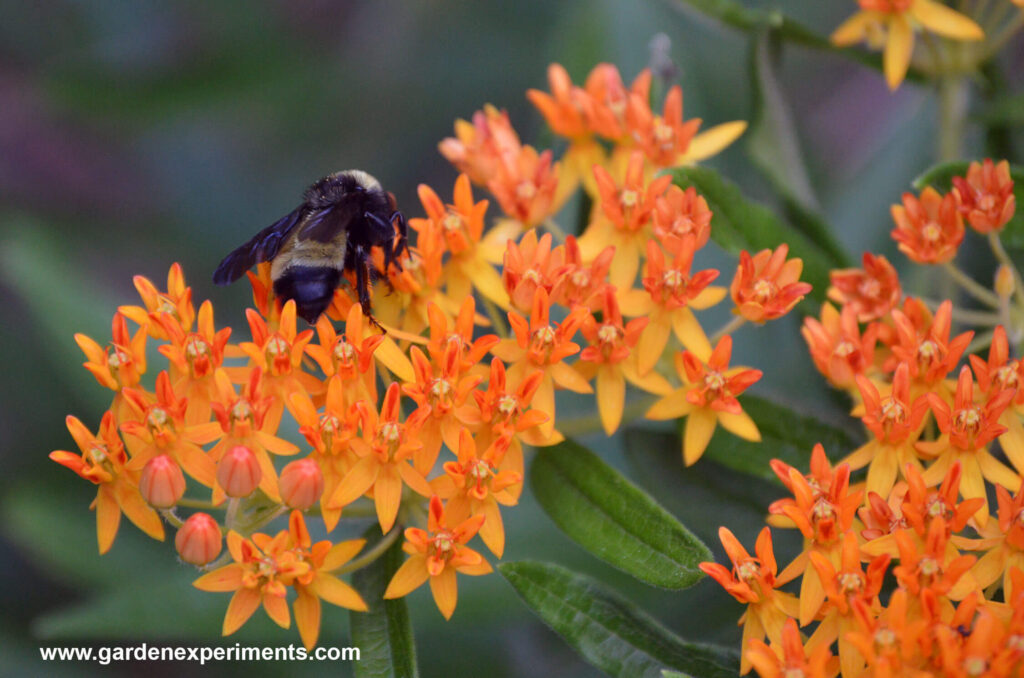
Butterfly Weed or Milkweed
Asclepias spp.
Perennial | Native | Zones 3-9
Bloom time: Summer
Butterfly FOOD & HOST PLANT
Butterfly weed is a native wildflower. It grows best in full sun in a variety of soils. It can be 1.5 – 2 feet tall and has bright orange flowers. Millkweeds are in the same genus and are an important host plant for monarch butterflies.
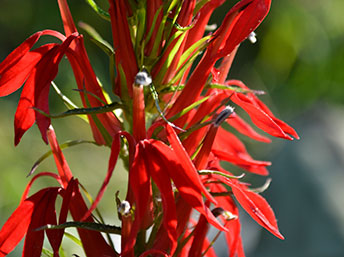
Cardinal Flower
Lobelia cardinalis
Perennial | Native | Zones 2-9
Bloom time: summer to fall
Butterfly FOOD PLANT
The flowers of cardinal flower are brilliant red, with multiple small flowers on one stem. This plant can be 3-6 feet and can grow in sun to shade. It prefers moist soils. It attracts hummingbirds and butterflies.

White & Red Clover
Trifolium repens and Trifolium pratense
Perennial | Non-native | Zones 4-9
Bloom time: Summer
BUTTERFLY CATERPILLAR HOST PLANT
For clouded sulphur, orange sulphur, eastern tailed blue, southern dogface, northern cloudywing, gray hairstreak, Reakirt’s blue butterflies
BUTTERFLY FOOD PLANT
Red clover grows up to 2′ in height and produces purple-colored blooms. It can be grown in full sun or part shade and pretty much any soil type. White clover spreads readily and may be invasive in some areas.
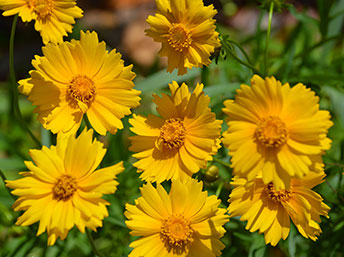
Coreopsis
Coreopsis spp.
Perennial | Native | Zones 3-9
Bloom time: Summer
BUTTERFLY FOOD PLANT
There are several flowering plants in the genus Coreopsis. They produce an abundance of tall gold to yellow flowers. The plants can grow 0.5-3 feet tall. They are deer resistant and drought tolerant. They prefer full sun and are tolerant of most well-drained soils. Blooms in summer.

Dill
Anethum graveolens
Annual | Non-native | Zones 3-11
Butterfly HOST PLANT
For black swallowtail butterflies
Dill is an herb often used for cooking. It is an annual and should be sown by seed in spring. It prefers full sun in loamy, well-drained soil. It grows to be 2 to 4 feet in height.

Fennel
Foeniculum vulgare
Annual or Biennial | Non-native | Zones 4-9
Bloom time: Summer
Butterfly HOST PLANT
For black swallowtail butterflies
Fennel is often found in kitchen gardens, but it is a great host plant for black swallowtail caterpillars. It grows best in full sun in rich, well-drained soils. It can grow to be 4 to 6 foot tall. It is deer resistant and drought tolerant. Blooms in summer.

Goldenrod
Solidago spp
Perennial | Native | Zones 4-9
Bloom time: summer and fall
Butterfly FOOD PLANT
There are many goldenrod species, but all provide nectar for butterflies and bees. It produces bright golden yellow flowers on top of tall stems in summer. It prefers full sun and well-drained soils. It is drought tolerant and deer resistant. In some locations it may spread rapidly.
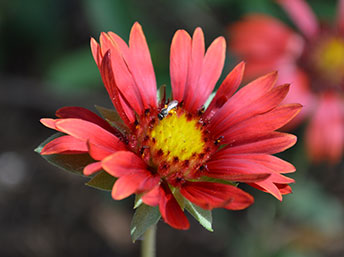
Indian Blanket
Gaillardia pulchella
Perennial or Annual | Native | Zones 2-11
Bloom time: spring and summer
Butterfly FOOD PLANT
This red and yellow flower provides nectar to feed butterflies in late spring to summer. It grows up to 3 feet tall in full sun or part shade. It prefers dry soil and is naturally found in grasslands.
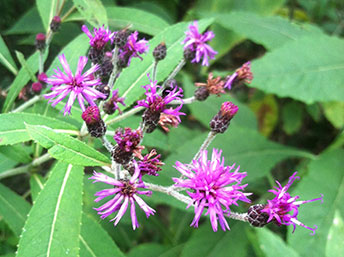
Ironweed
Vernonia spp.
Perennial | Native | Zones 3-9
Bloom time: summer
BUTTERFLY FOOD PLANT
The nectar of the ironweed plant is a food source for butterflies and bees. This plant grows to be 3-7 feet tall. It produces small purple flowers in summer. It will grow on a variety of soils but prefers moist soil. Plant in full sun or part shade.
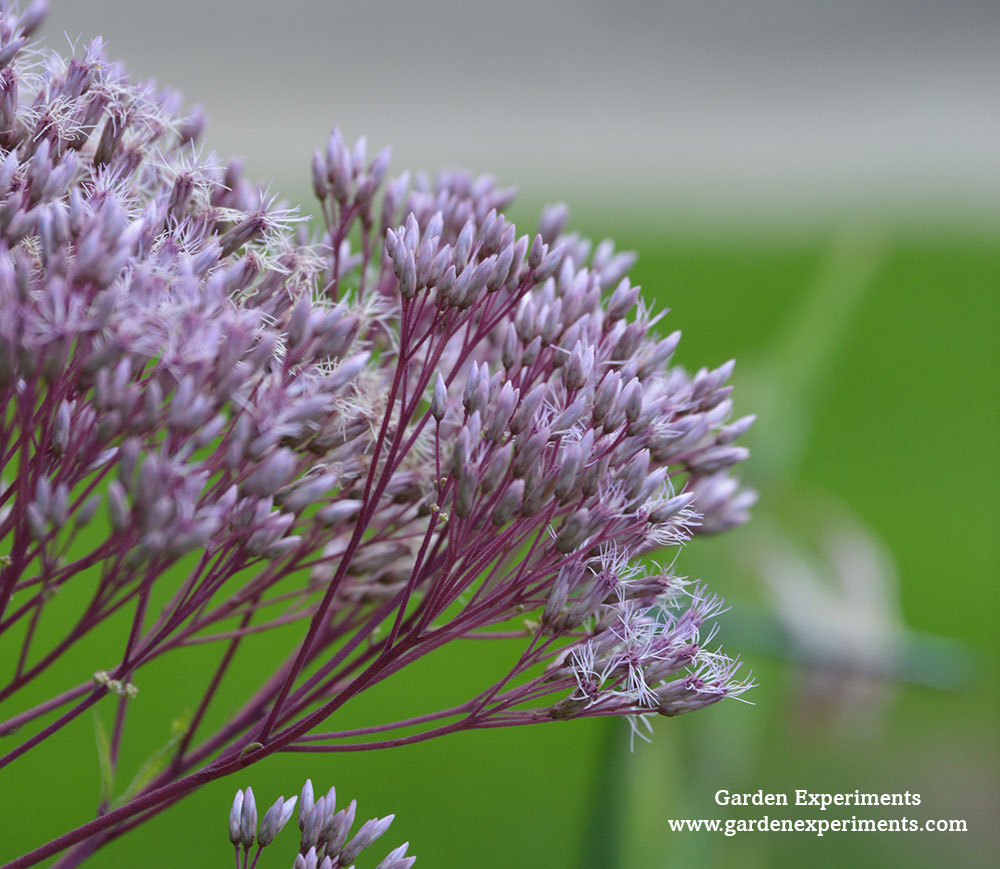
Joe Pye Weed
Eupatorium spp.
Perennial | Native | USDA Zones 3-10
Bloom time: Summer
Butterfly FOOD PLANT
Joe Pye Weed attracts hoverflies, bees, and butterflies. Different species range in height from 1-6′. Flowers can be purple, pink, or white. It is deer resistant and drought tolerant. It prefers moist soil but can tolerate dry conditions for a short time. Full sun to part shade is best. Bloom time is in the summer.
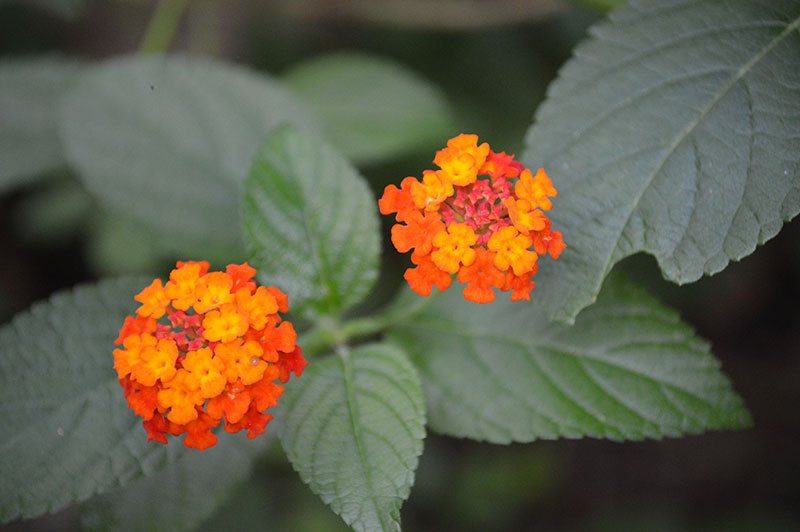
Lantana
Lantana spp.
Perennial or Annual | Non-native | Zones 8-11
Bloom time: Summer and fall
Butterfly FOOD PLANT
If you’ve grown lantana, you know how much the butterflies like this plant. I often see it in butterfly houses too. It has a wide range in height from a foot or two to 8 feet! It can be grown in full sun to part shade. It is deer- and rabbit-resistant and drought-tolerant. Flowers bloom in summer and may continue into fall. They come in a variety of colors.
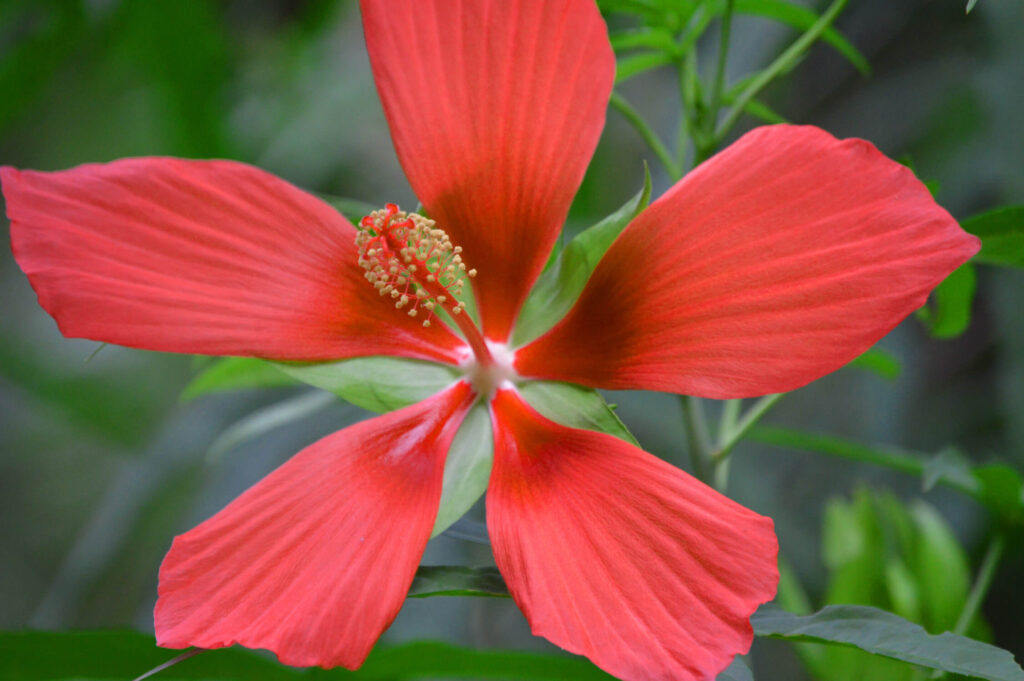
Mallows
Hibiscus spp.
Perennial or Annual | Native and Non-native | Zones vary
Bloom time: Spring to fall
BUTTERFLY HOST PLANT
For the gray hairstreak
Mallows are a widely varied family. For best results to attract the gray hairstreak, stick with natives for your area. Mallows can be grown in a wide variety of conditions including swampy soils. The swamp mallow has a tall, bright red flower and grows in wet soils.
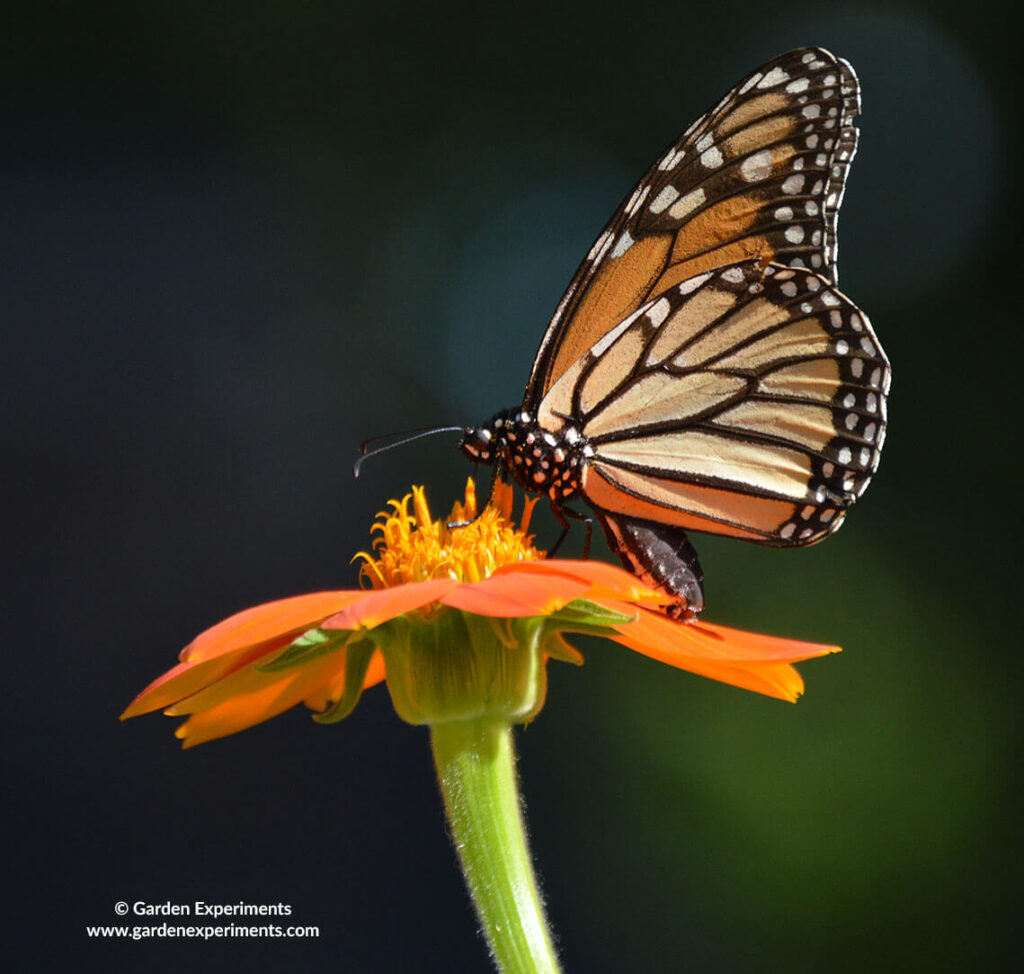
Mexican Sunflower
Tithonia rotundifolia
Annual | Non-Native | USDA Zones 10-11
Bloom time: Summer to fall
BUTTERFLY FOOD PLANT
Mexican sunflower produces an abundance of bright orange flowers that attract butterflies by the dozens. This plant grows very tall, up to 6 feet. It prefers full sun and well-drained soil, but don’t let it dry out. Collect seeds to replant the next year.
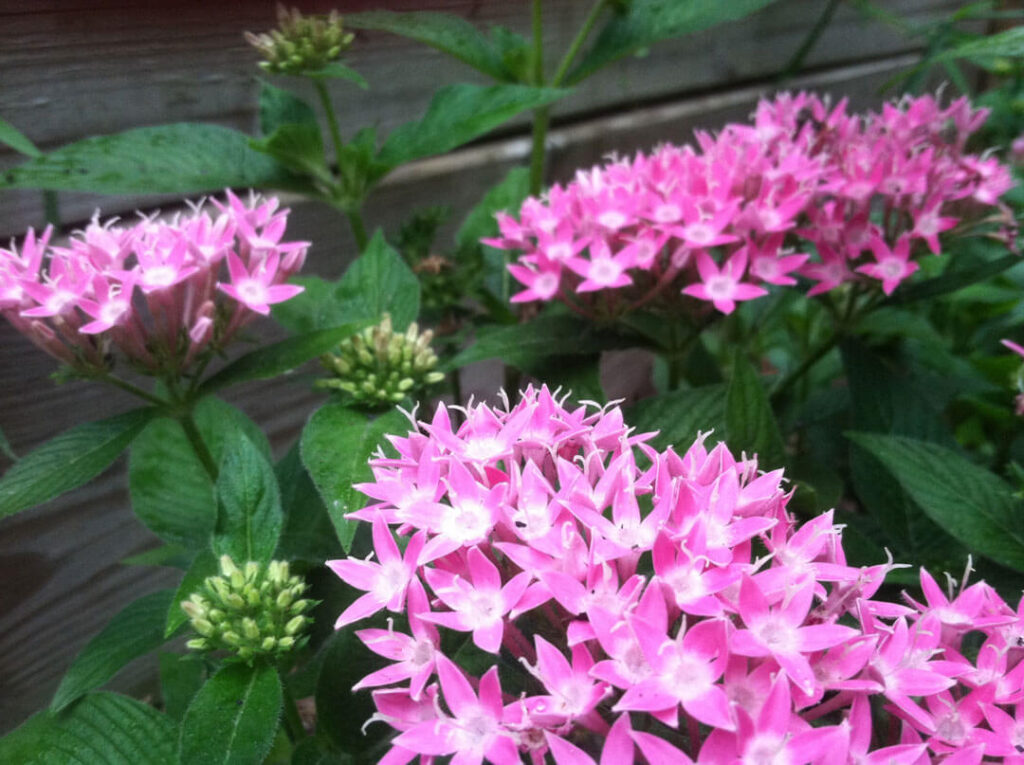
Pentas
Pentas spp.
Perennial/Annual | Non-native | Zones 9-11
Bloom time: Spring and summer
Butterfly Food Plant
Pentas are a showy flower that attracts hummingbirds and butterflies. The plant is grown as an annual in cooler climates. Flowers come in shades of pink, red, white, or purple and bloom in the spring and summer. Plants are generally less than a foot tall as an annual but can be several feet when grown as a perennial. I often see this plant grown in butterfly houses.
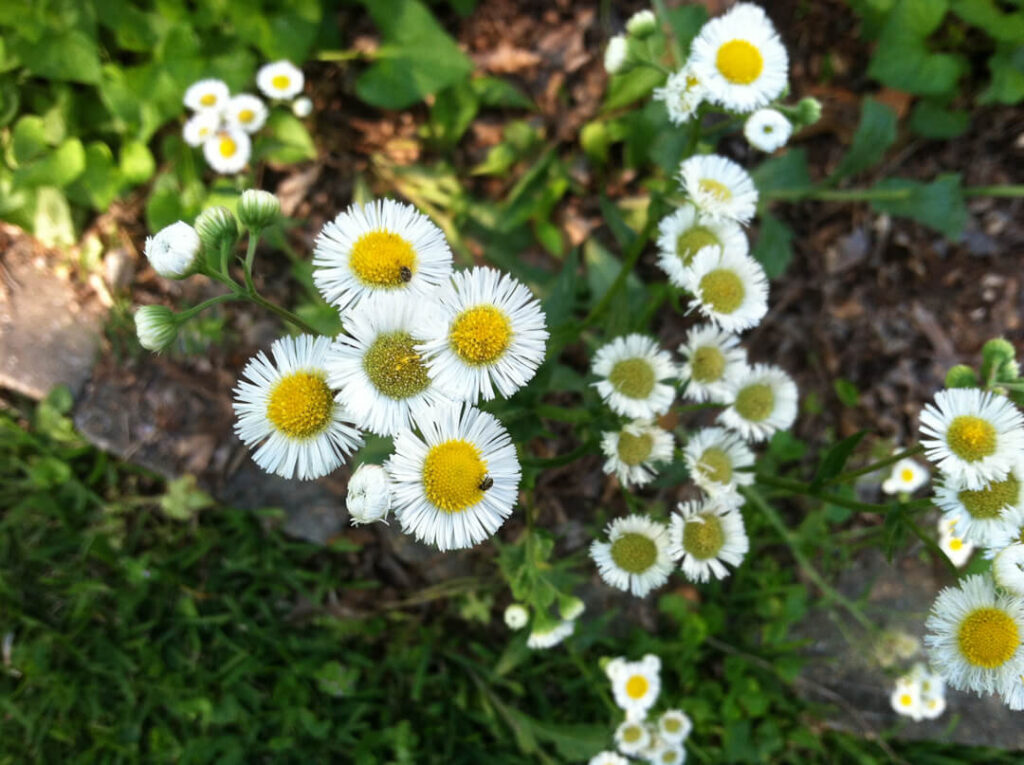
Philadelphia fleabane
Erigeron philadelphicus
Biennial/Perennial | Native | Zones 3-10
Bloom time: Spring and summer
BUTTERFLY FOOD PLANT
Philadelphia fleabane is a wildflower commonly found along roadsides and in fields. It grows in full sun to part shade with moderately moist soil that drains well. It flowers in the spring and summer. It reaches a height of 1-3 feet.
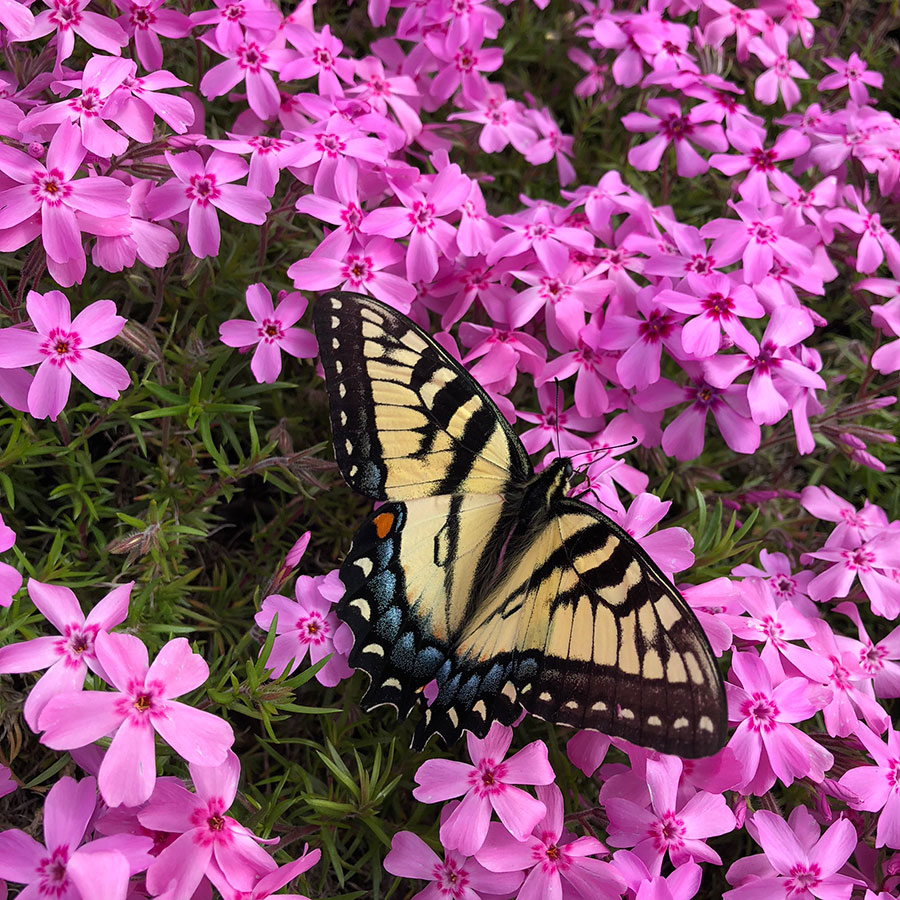
Phlox
Phlox spp.
Perennial & Annual | Native | USDA Zones 4-8
Bloom time: Spring and Summer
BUTTERFLY FOOD PLANT
The genus Phlox includes about 76 different species of plants, ranging from a groundcover plant to tall plants, sometimes several feet in height. Many phlox bloom in summer and have a sweet smell. They do best in full sun with well-drained soil. Phlox attract butterflies and hummingbirds. Woodland phlox is an early spring bloomer that only grows up to 20 inches tall.
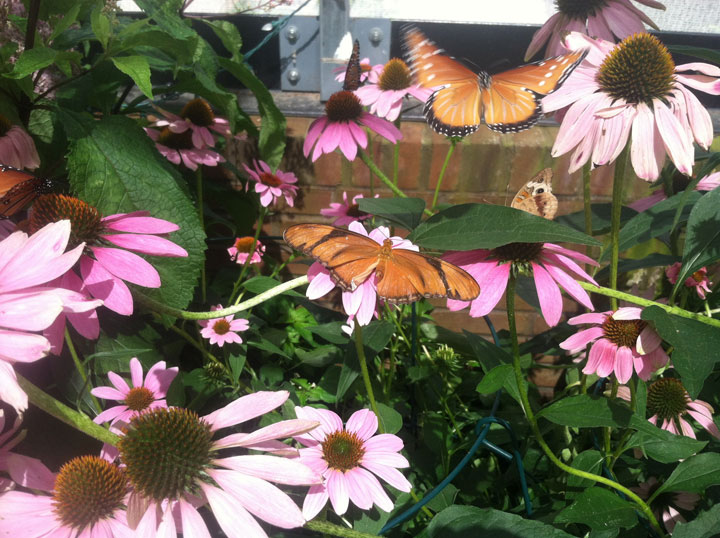
Purple coneflower
Echinacea purpurea
Perennial | Native | USDA Zones 3-9
Bloom time: Spring and Summer
BUTTERFLY FOOD PLANT
Purple coneflower is a long-flowering, heat-tolerant plant that blooms in spring and summer. The nectar provides food for butterflies and bees and small birds feed on the seeds in fall. It grows to be 2 to 4 feet tall. Plant in full sun in dry soil.
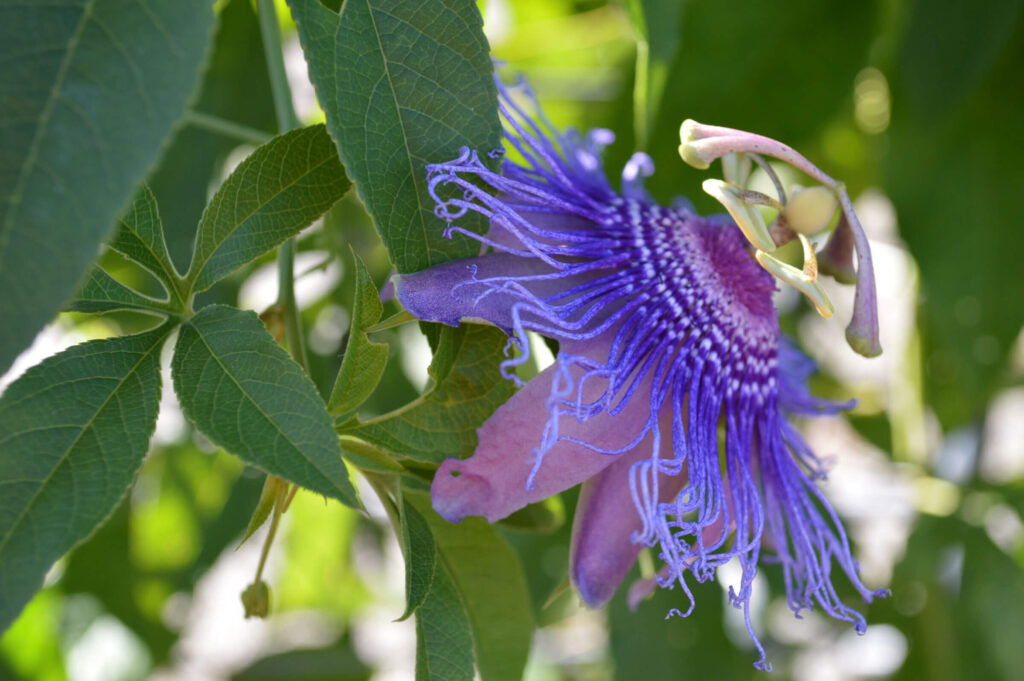
Purple passionflower
Passiflora incarnata
Perennial | Native | USDA Zones 6-9
Bloom time: Summer
BUTTERFLY HOST & FOOD PLANT
Purple passionflower vine is host to the caterpillars of the gulf fritillary, zebra longwing, red-banded hairstreak, and Julia butterflies. It grows best in full sun with ample room to climb. It doesn’t require much water and is drought-tolerant. It can grow in a variety of soils but does best in well-drained soil.
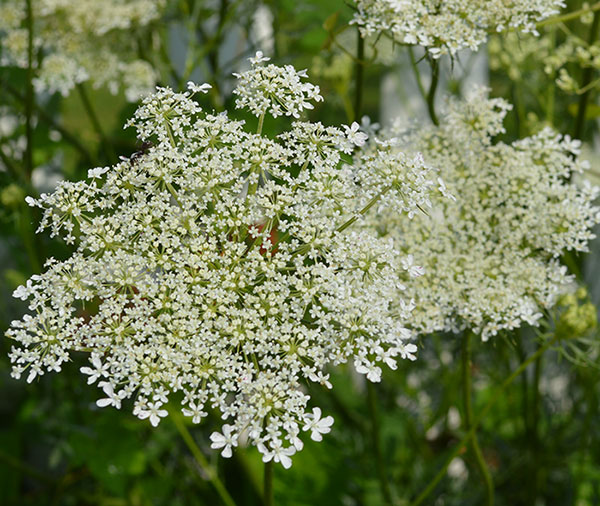
Queen Anne’s Lace
Daucus carota
Biennial | Native | Zones 3-9
Bloom time: Summer
BUTTERFLY HOST AND FOOD PLANT
Queen Anne’s Lace is a native flowering plant that is host to the caterpillars of swallowtail butterflies. It grows along ditches and roadsides and in fields. It reaches a height of 2 to 4 feet tall. For best results, plant in full sun in dry soil. In some cases it may spread rapidly.
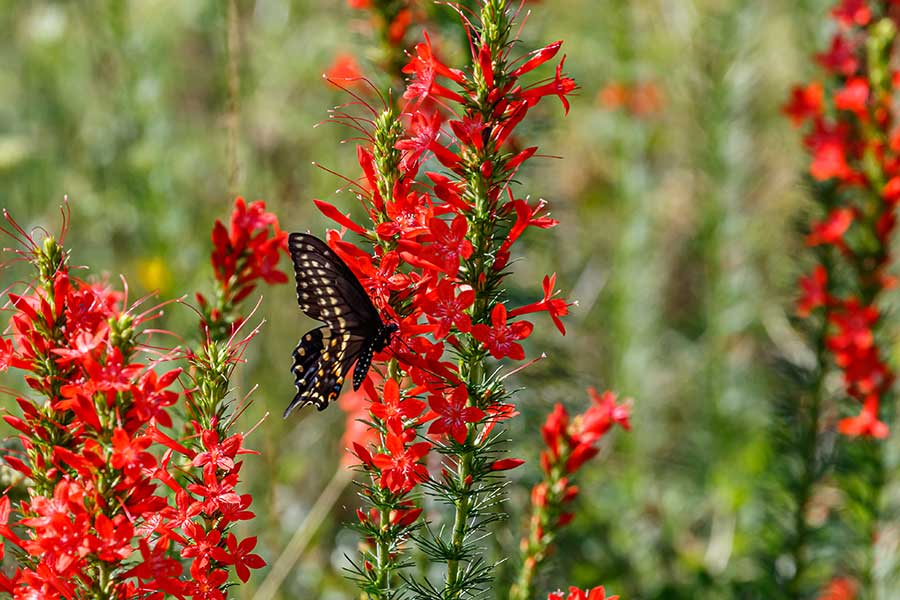
Red Texas Star or Standing Cypress
Ipomopsis rubra
Biennial | Native | Zones 6-9
Bloom time: Summer
BUTTERFLY FOOD PLANT
Red Texas star’s red and yellow flowers attract butterflies and hummingbirds. It grows 2-4 feet tall. Plant in full sun in well-drained soil. It is deer-resistant and drought-tolerant. It blooms in summer and provides food for butterflies.
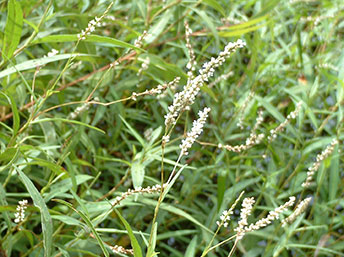
Smartweed
Polygonum spp.
Perennial | Native & Non-native | Zones 3-8
BUTTERFLY HOST PLANT
Smartweeds play host to the caterpillars of the purplish copper and gray hairstreak butterflies and some moths. Birds will eat the seeds of these plants. Some introduced Polygonum species are invasive in some areas. The growing conditions and height of the plant depends on the species.
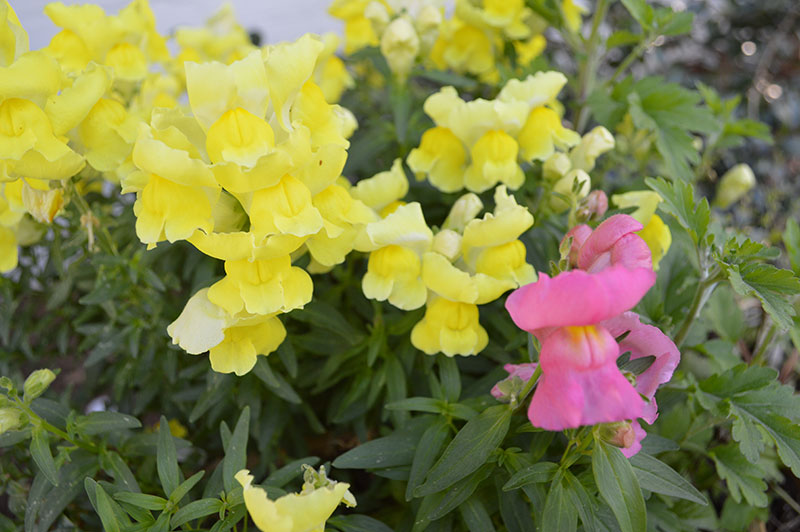
Snapdragons
Antirrhinum spp.
Annual | Native & Non-native | Zones 9-11
Bloom time: Summer
BUTTERFLY HOST PLANT
Snapdragons are a host plant for the common buckeye butterfly. Plant in full sun in well-drained soil for the best results. They bloom in the summer and are heat and cold tolerant. Snapdragons can range from 1 to 3 feet in height. Keep the soil evenly moist.
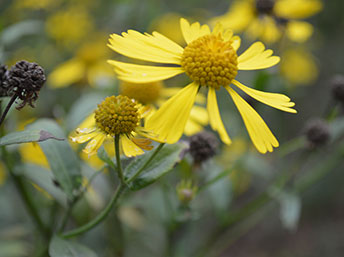
Sneezeweed
Helenium spp.
Perennial | Native | Zones 3-8
Bloom time: Summer and fall
BUTTERFLY HOST AND FOOD PLANT
Sneezeweed produce yellow, orange, and deep red flowers. It grows in a variety of soil conditions but prefers wet or moist soils. Plant in full sun. It is a host plant for sulphur butterflies. It grows up to 3 feet in height.
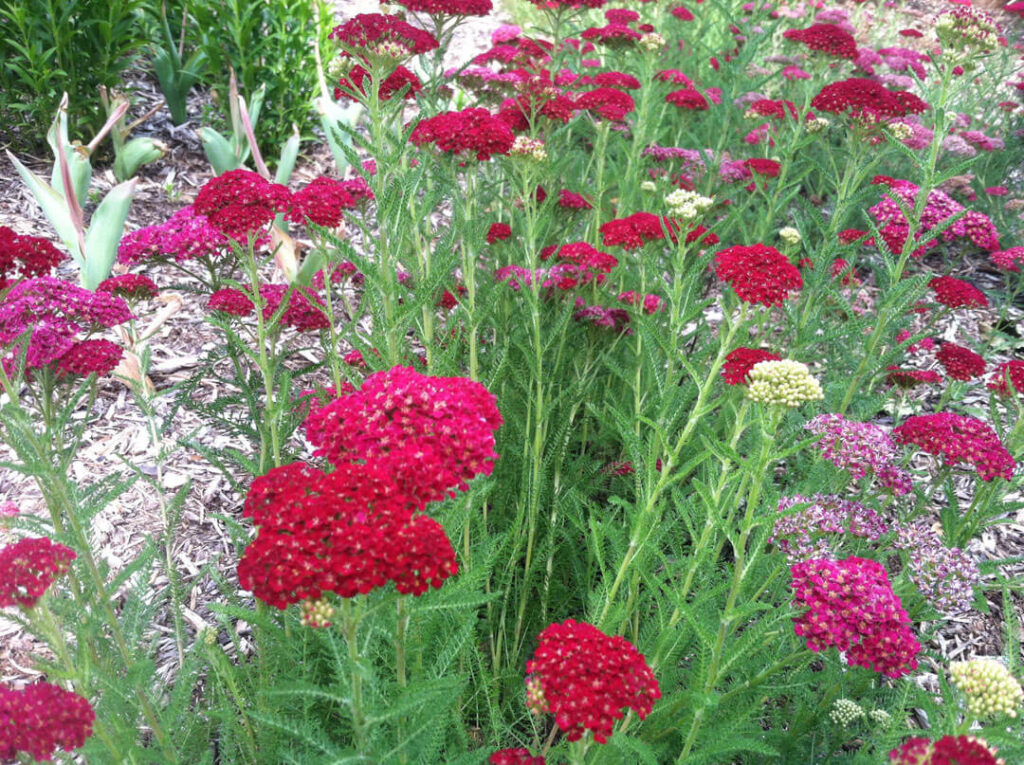
Yarrow
Achillea spp
Perennial | Native | Zones 3-9
Bloom time: Summer
BUTTERFLY FOOD PLANT
Yarrow is a hardy plant that features clusters of tiny flowers on a tall stem. The leaves are feathery and short, growing close to the ground. Yarrow colors range from yellow, pink, red, or white. Bloom time is in the summer. These plants are drought-tolerant and heat-tolerant. They prefer full sun to partial shade and dry soil.
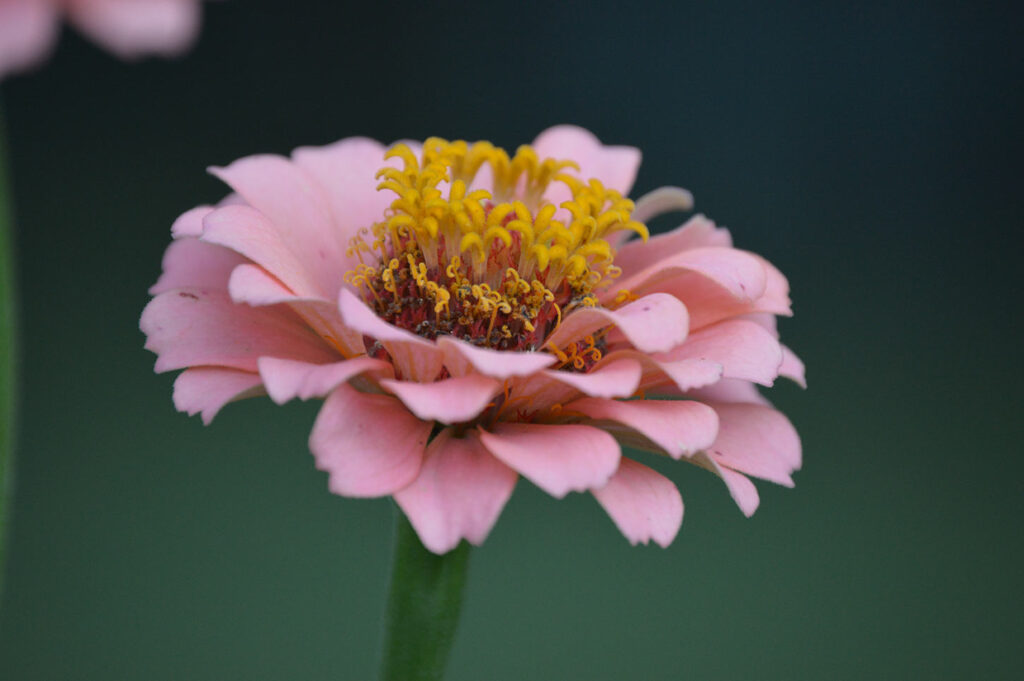
Zinnias
Zinnia spp
Annual | Non-Native | Zones
Bloom time: Spring, Summer, and Fall
BUTTERFLY FOOD PLANT
Zinnias are a favorite of both mine and the butterflies. The are easy to grow by seed and range in height from 1 foot to 5 feet. They are drought tolerant and grow best in full sun in well-drained soil.
